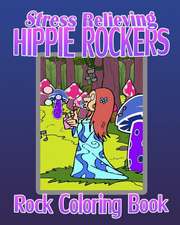Giotto and His Works in Padua
Autor John Ruskinen Limba Engleză Paperback
| Toate formatele și edițiile | Preț | Express |
|---|---|---|
| Paperback (6) | 40.48 lei 3-5 săpt. | |
| CreateSpace Independent Publishing Platform – | 40.48 lei 3-5 săpt. | |
| CREATESPACE – | 45.36 lei 3-5 săpt. | |
| DAVID ZWIRNER – 21 mar 2018 | 47.24 lei 3-5 săpt. | +16.45 lei 7-13 zile |
| CREATESPACE – | 95.57 lei 3-5 săpt. | |
| Echo Library – 7 mai 2007 | 66.13 lei 38-44 zile | |
| Book Jungle – 6 apr 2009 | 113.63 lei 6-8 săpt. |
Preț: 40.48 lei
Nou
Puncte Express: 61
Preț estimativ în valută:
7.75€ • 8.03$ • 6.47£
7.75€ • 8.03$ • 6.47£
Carte disponibilă
Livrare economică 01-15 martie
Preluare comenzi: 021 569.72.76
Specificații
ISBN-13: 9781530041978
ISBN-10: 153004197X
Pagini: 74
Dimensiuni: 152 x 229 x 4 mm
Greutate: 0.11 kg
Editura: CreateSpace Independent Publishing Platform
ISBN-10: 153004197X
Pagini: 74
Dimensiuni: 152 x 229 x 4 mm
Greutate: 0.11 kg
Editura: CreateSpace Independent Publishing Platform
Notă biografică
John Ruskin (1819¿1900) was an English critic of art, architecture, and society, who sought change through his polemical prose. Best know for his five-volume treatise on art, Modern Painters¿published volume by volume from 1843 to 1860¿Ruskin applied Romantic thought to art criticism, rather than relying solely on religious tradition. In doing so, he opened up possibilities surrounding the appreciation and understanding of art, through emotive descriptions, rather than illustration. Particularly intrigued by the painting of the Gothic Middle Ages, Ruskin felt that painters such as Giotto and Fra Angelico were the ideal subject for modern painters. Ruskin¿s then novel insistence that art and architecture are the direct expression of the conditions in which they were made, continues to influence the study of the fields today.
Giotto (c. 1267¿1337) is widely known for his role in liberating Italian painting from the Byzantine style of the early Middle Ages. Mainly active in Florence, although he may have been trained in Rome, he also worked in Avignon, Padua and Naples (1328-32). His contribution to challenging and forever changing Italian painting was widely acknowledged by Dante his contemporary, and later by Vasari. His style is associated with a supreme sense of momentous and his individualized, emotive figures are depicted with a new sense of three-dimensionality while inhabiting plausible architectural spaces. Besides the Arena Chapel, Giottös main surviving fresco cycles are those in the Bardi and Peruzzi chapels in Santa Croce, Florence, probably painted before 1328.
Robert Hewison is a British cultural historian who has combined a life-long study of John Ruskin with an active engagement in contemporary culture. He became interested in Ruskin when he wrote a television adaptation of the Whistler v. Ruskin libel trial, and returned to Oxford to take a research degree that led to his first book, John Ruskin: The Argument of the Eye (1976). In 1978 he curated Ruskin and Venice at the J.B. Speed Art Museum, Louisville. He has edited two collections of essays on Ruskin, New Approaches to Ruskin (1981, reprinted 2015) and Ruskin¿s Artists: Studies in the Victorian Visual Economy (2000). In 2000 he co-curated Ruskin, Turner and the Pre-Raphaelites at Tate Britain and in 2009 published Ruskin on Venice: ¿The Paradise of Cities¿. In addition to a career an arts journalist and broadcaster, he has held chairs at Lancaster University and City University London, and was Slade Professor of Fine Art at Oxford in 2000. In 2017 he delivered a course on Ruskin for the Graduate School of Architecture, Planning and Preservation at Columbia University, New York.
Giotto (c. 1267¿1337) is widely known for his role in liberating Italian painting from the Byzantine style of the early Middle Ages. Mainly active in Florence, although he may have been trained in Rome, he also worked in Avignon, Padua and Naples (1328-32). His contribution to challenging and forever changing Italian painting was widely acknowledged by Dante his contemporary, and later by Vasari. His style is associated with a supreme sense of momentous and his individualized, emotive figures are depicted with a new sense of three-dimensionality while inhabiting plausible architectural spaces. Besides the Arena Chapel, Giottös main surviving fresco cycles are those in the Bardi and Peruzzi chapels in Santa Croce, Florence, probably painted before 1328.
Robert Hewison is a British cultural historian who has combined a life-long study of John Ruskin with an active engagement in contemporary culture. He became interested in Ruskin when he wrote a television adaptation of the Whistler v. Ruskin libel trial, and returned to Oxford to take a research degree that led to his first book, John Ruskin: The Argument of the Eye (1976). In 1978 he curated Ruskin and Venice at the J.B. Speed Art Museum, Louisville. He has edited two collections of essays on Ruskin, New Approaches to Ruskin (1981, reprinted 2015) and Ruskin¿s Artists: Studies in the Victorian Visual Economy (2000). In 2000 he co-curated Ruskin, Turner and the Pre-Raphaelites at Tate Britain and in 2009 published Ruskin on Venice: ¿The Paradise of Cities¿. In addition to a career an arts journalist and broadcaster, he has held chairs at Lancaster University and City University London, and was Slade Professor of Fine Art at Oxford in 2000. In 2017 he delivered a course on Ruskin for the Graduate School of Architecture, Planning and Preservation at Columbia University, New York.


















